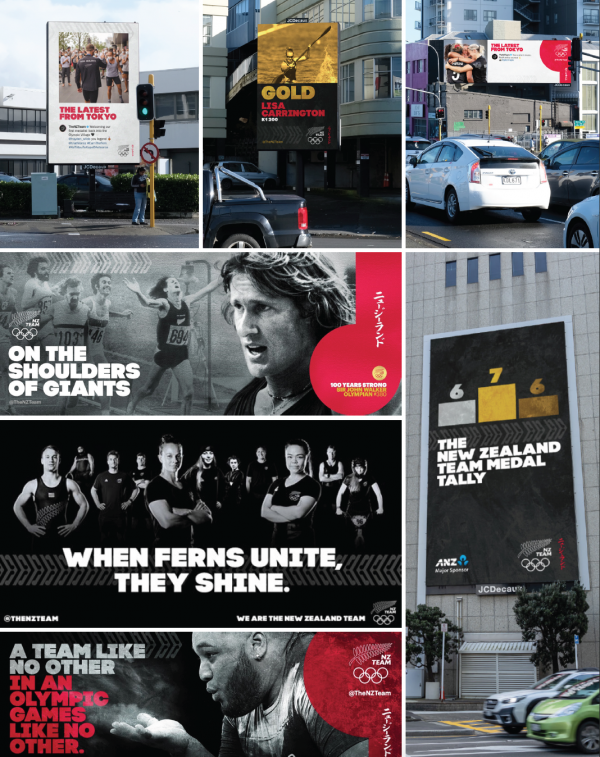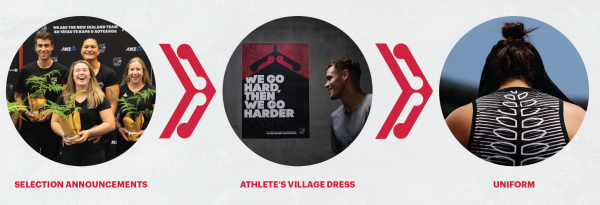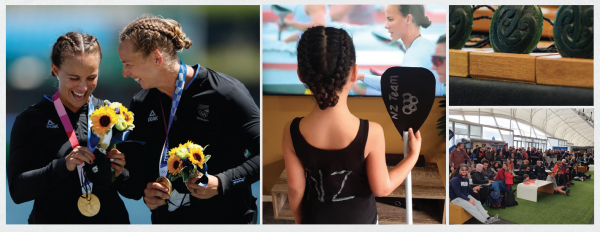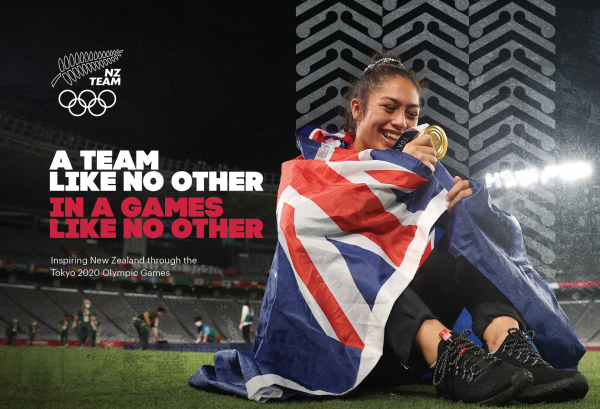The NZ Team's Tokyo 2020 'Earn The Fern' campaign showed that a theme rooted in team culture proved key to success.
New Zealand Olympic Committee Brand Manager Alex Cooper-Cuthbert talks to the goals, challenges and highlights of the campaign.

What was the main goal of the campaign?
Our main goal was to build interest and pride in the New Zealand Team, and create excitement around the athletes attending the Tokyo 2020 Olympic Games. We wanted to extend our reach and develop brand equity with some our developing audiences, one of them being young males. At the same time, we needed to make sure we took our existing fan base along for the ride.
In terms of narrative, we’d spent the last couple of years establishing our brand platform “Earn the Fern” which talks to the incredible dedication, passion and pride in wearing the silver fern on the world’s stage. For the Tokyo Olympic Games we wanted to go one step further and explain why the fern meant so much to the New Zealand Team. We would talk about what the fern stood for, what it meant to Aotearoa and how it pushed New Zealand athletes to new limits. We also wanted to show how the Fern helps bring together a diverse bunch of team members. At the Olympic Games we have athletes from different sports, backgrounds, ages and locations all coming together as the New Zealand Team and united by the one silver fern.
We had a multi-faceted campaign to deliver – but it was an exciting challenge and resonating with both new and existing audiences and the incredible athletes in the New Zealand Team was a goal we felt passionate about achieving.

How do you bring such a multi-faceted campaign together?
We needed to understand and delineate all the parts and make sure each aspect of the campaign story and design style would resonate with multiple groups and types of people – including the members of the New Zealand Team.
To do this, we needed to consult widely and make sure we understood our audiences. We spoke to athletes, sports psychologists, NZOC staff, New Zealand Team leaders and more to ensure there was something in the campaign for everyone and that tonally it hits the mark. Then once we were comfortable, we consulted further outside of our whānau – for this one we consulted with New Zealanders in Japan, existing fans, developing audiences and audience research and data experts.
The insights we gathered were invaluable in creating an authentic ‘inside out’ story. From there, we considered ways to apply the campaign across as many areas as possible. The campaign would be seen on billboards, television, our digital channels such as Instagram, YouTube, Facebook and TikTok. It would also be an internal campaign and form the base of our New Zealand Team uniform, athlete village design, our vehicle fleet and more. It was the role of the Brand Manager to keep an eye across all these areas to ensure everything feels on-brand and true to the campaign.

How did you define your target audiences?
At the end of each year, we conduct brand research with Kantar that tells us which audiences we’re connecting with and which we aren’t – down to quite detailed segments by age group, gender, location in New Zealand, life stage, income and more. The results from this report become a bit of a bible to shape our planning for the upcoming year.
Over the last few years we have seen that brand love has been steadily increasing across followers of the New Zealand Team (who we define as Fans) and the Olympic and Commonwealth Games (who we define as Event Followers), but there were at least two audience segments that interest levels were slowly declining or plateauing in.
What were the challenges we faced?
The expense of sending a Team to Games has been rapidly growing year on year, and as a not-for-profit we need a strong family of commercial partners to help us meet these costs and ensure that our brand resonates with key audiences.
COVID obviously had a significant impact. We had only just launched our campaign when the first outbreak hit. With everyone in lockdown we were unable to go out and create campaign content. In addition, it felt wrong to continue to talk about the Games themselves when they were postponed, and everyone was feeling very uncertain.
As a result, we took the opportunity to pause our Tokyo-focussed campaign and instead turned our immediate focus to our athletes and helping them remain connected. Working with Digital Manager Alex Spence, we reset the clock, banked content previously filmed, changed our tone and embraced new themes such as our ‘Champions of Isolation’ series, which was one of our most successful 'athlete led' digital activations.
Our second challenge was to make sure we were adding real value as a brand proposition for our commercial partners. They tend to align with us to shift brand metrics, rather than for a more tangible sales reason and they too were suffering from the negative impact of Covid so the need for value was even more important.
Third, the support from existing New Zealand Team fans was robust which meant we didn’t really have room to grow. Instead we had to target new audiences as our way to gain additional reach, engagement and value for our athletes and partners.
Finally, having managed the initial impact of the Covid lockdowns and processed the postponement of the Olympic Games by one year, we decided to rethink and redesign our entire campaign. How would we communicate in the new world we all faced, and how would we connect to and reflect changing public sentiment. New content was rolled-out across billboards and our digital channels. The new content told the story of the New Zealand Team, our team culture of Manaaki and the character and mana of New Zealand’s athletes. We also promoted the legacy of the Olympic Games and what they mean to New Zealanders.
We began to re-focus on the Tokyo 2020 Olympic Games themselves in February 2021, getting louder and louder until the Games (finally) happened in July 2021.

What were the highlights and key takeaways?
The risk we took in targeting new audiences and with revising our entire campaign paid off. The New Zealand Team achieved our highest level of brand growth in our target audiences. 92% of people believed that the campaign connected with who we are as New Zealanders, and what it means to be a New Zealand athlete, and New Zealand’s pride in the Team grew by 8%.
Our top three channels for driving views were new for us. TikTok delivered 26.7M views, dynamic real-time digital billboards gained 13.5M views and Instagram Reels delivered 18.8M views.
These outstanding results reinforced that idea that fresh approaches to channel use are key to driving audience growth. New Zealand Team athletes were pleased with the campaign, though some felt we could have been talking about Tokyo longer – an interesting area to balance between athlete confidence and public sentiment that we’ll be interrogating with future campaign planning.
A campaign theme rooted in team culture proved key to allowing us to tell an authentic story from the inside out.
Ahead we have the Beijing Olympic Winter Games and Birmingham Commonwealth Games in 2022 and the Paris Olympic Games in 2024. Games costs will continue to rise, and we’ll need to continually show value to partners…and who knows how Covid will challenge our goals… but, while we look to meet these challenges with new audiences, new stories and new channel approaches the New Zealand Team brand will stay true to our culture of manaaki, our legacy and mana.

Tweet Share
